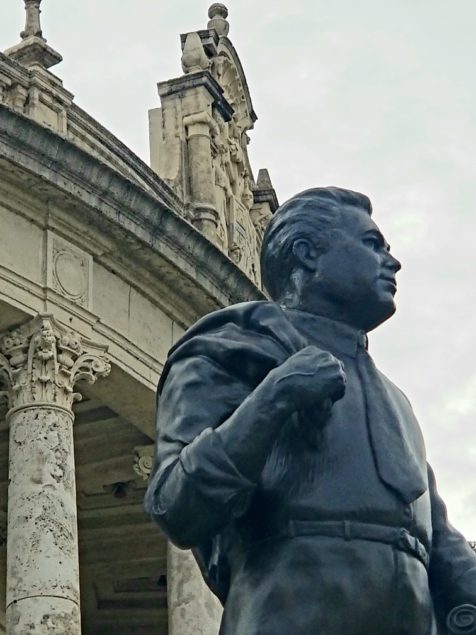|
Getting your Trinity Audio player ready...
|

(Photo credit: Karelia Martinez Carbonell)
Coral Gables founder George E. Merrick was born in 1886 less than 15 years before the turn of the century.
He grew into the “modern man” of the 20th Century — an entrepreneur and visionary, a millionaire who gave away most of his fortune before he lost the rest of it, and a civic leader. He only was active in Coral Gables for less than a decade, from 1920 to 1928, and looked at what he accomplished — a new city — the City Beautiful, which will turn 100 in 2025.
He was a patron of education and founded schools as part of his new planned city. He was altruistic. The University of Miami solely exists because of George E. Merrick. In 1925, he not only donated close to 500 acres of land but also committed to a $5 million personal donation. Two years earlier, in 1923, he commissioned Coral Gables Elementary School and subsequently sold the site to the Dade County School Board.
He was an advocate of the working people. The late historian Arva Parks was Merrick’s greatest cheerleader. Parks said that Merrick was “adored as a human being” by most, even the postmen who worked for him. And one of his first moves as postmaster was to give equal pay to women.
Her final book on Merrick, George Merrick, Son of the South Wind, is testament to her esteem for the man. Her words help underscore Merrick’s true legacy including his affinity for the Bahamian laborers and his many works helping that community.
Also in her book, Parks mentions that, “Many years later, Merrick would honor these Bahamians in a series of stories he titled ‘Men of the Magical Isles.’” One line in the story highlights Merrick’s praise and admiration for them, when he writes, “Very few realize today how much our Bay country owes, in its very foundation, to the Bahamian [laborers].”
A mostly overlooked gesture is Merrick’s establishment of the MacFarlane District (today a nationally designated landmark). In 1925, Flora MacFarlane sold 20 acres to Merrick’s construction company. The purchase established a Coral Gables subdivision named after MacFarlane. Many Bahamian immigrant laborers, particularly Afro-Bahamians, subsequently built homes there. St. Mary’s Baptist Church, a focal point of the community and the first and only African American church in Coral Gables, was built in 1927.
In Merrick’s article in the inaugural 1941 edition of Tequesta, an annual publication of HistoryMiami, he credits the Bahamians for “having a most distinct and important influence…and brought inspiration…and other valuable knowledge and experience” when building with natural resources such as coral rock and other tropical materials.
Apart from the MacFarlane District, Merrick also developed Golden Gate for the Black community. Here he again donated land and his own money to build several Mediterranean-style buildings designed by his team of architects including Fink and DeGarmo. The Ponce de Leon High School was part of that development.
In 1927, Merrick was decorated by King Alphonso of Spain with the honorary title of “Don of the Order of Isabella De Catolica.” Apart from the royal title, George Merrick was an entrepreneur, a visionary, a public servant, and above all a good man. Merrick died at 55.
Indeed the good die young.
Karelia Martinez Carbonell is th epresident of the Historic Preservation Association of Coral Gables. The Historic Preservation Association of Coral Gables is a 501(c)3 non-profit founded in 1991. The association promotes the understanding of the importance of historic resources and their preservation. For more information and/or to support the mission of HPACG, visit www.historiccoralgables.org.





